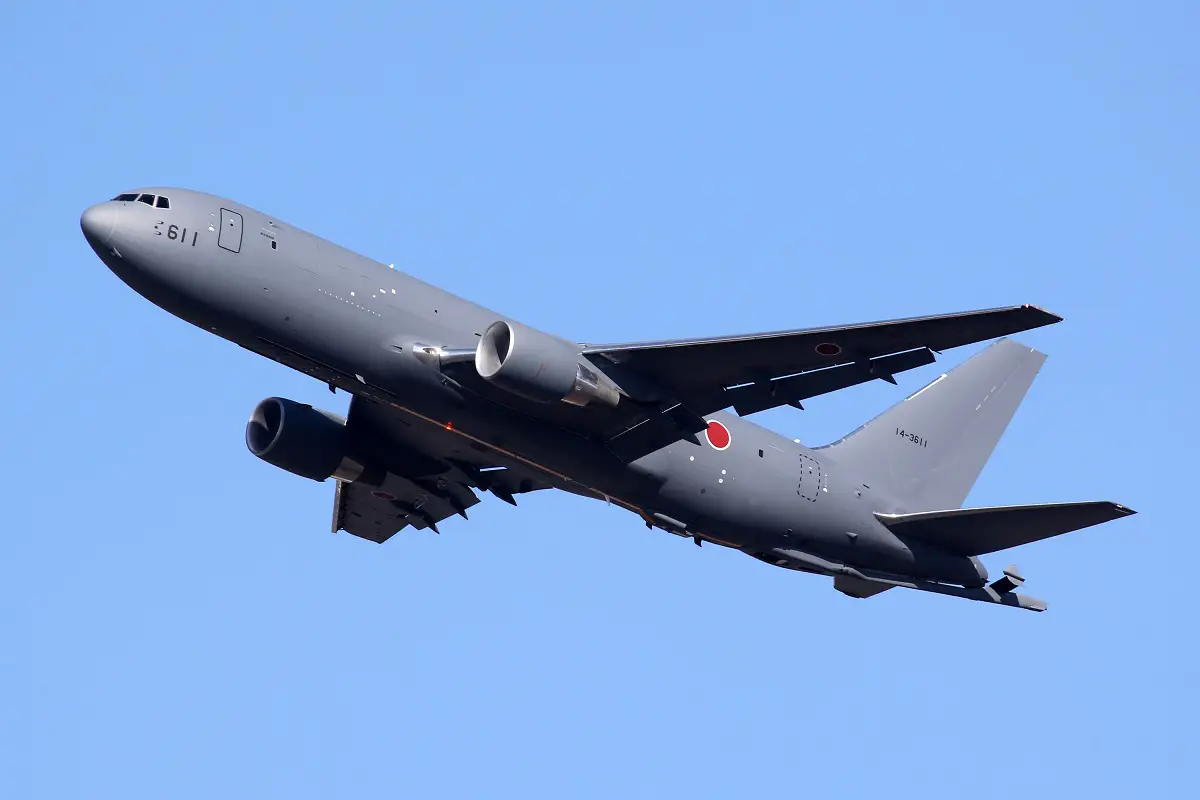The U.S. State Department has authorized a landmark Foreign Military Sale (FMS) to Japan, involving the procurement of up to nine Boeing KC-46A Pegasus aerial refueling aircraft, along with extensive equipment and support services, valued at approximately $4.1 billion. This deal represents a significant step in modernizing Japan’s air refueling capabilities and bolstering its strategic military posture in the region. The sale encompasses a comprehensive suite of equipment and support systems. Japan has requested up to nine KC-46A aircraft, each equipped with up to eighteen Pratt & Whitney PW4062 turbofan engines. Additionally, the package includes up to sixteen AN/ALR-69A radar warning receivers, thirty-three Large Aircraft Infrared Countermeasure (LAIRCM) Guardian Laser Turret Assemblies (GLTAs), and up to eighteen LAIRCM system processor replacements. The major contractors involved in this deal include Boeing Corporation, Pratt & Whitney Military Engines, RTX Corporation, and Northrop Grumman Corporation. Notably, there are no offset agreements proposed, simplifying the logistics and delivery processes associated with this sale.
The KC-46A Pegasus is an advanced military aerial refueling and strategic transport aircraft, developed by Boeing from its 767 jetliner. Selected by the United States Air Force (USAF) in 2011 to replace the aging KC-135 Stratotankers, the KC-46A combines the fuselage of the 767-200ER with the wing and cargo capabilities of the 767-300F, and features the digital flight deck of the 767-400ER. The KC-46A is equipped with two Pratt & Whitney PW4062 engines, which provide the aircraft with the power needed for its extensive refueling and transport operations. It can carry up to 212,299 pounds of fuel—10 percent more than its predecessor, the KC-135—along with 65,000 pounds of cargo. The aircraft’s design includes advanced infrared countermeasures and limited electronic warfare capabilities to enhance its survivability in hostile environments. A key feature of the KC-46A is its versatility in refueling operations. It is equipped with a fly-by-wire refueling boom, wing air refueling pods, and a centerline drogue system, allowing it to perform both boom and hose-and-drogue refueling in a single mission. The aircraft’s Aerial Refueling Operator Station (AROS) includes sophisticated displays and multi-spectral cameras, enabling operators to conduct refueling operations in various conditions, including total darkness.

Japan’s decision to acquire the KC-46A underscores its commitment to modernizing its air refueling capabilities and enhancing its interoperability with U.S. forces. The Japan Air Self-Defense Force (JASDF) currently operates four KC-767 tankers and has previously ordered additional KC-46A aircraft, with the first delivered in November 2021. This latest purchase will expand Japan’s fleet and improve its ability to refuel a wider range of aircraft, including the MV-22 Osprey tiltrotors, which Japan plans to integrate into its defense capabilities. The KC-46A’s advanced features, such as its improved refueling systems and electronic warfare countermeasures, are expected to provide Japan with a significant strategic advantage. This acquisition not only enhances Japan’s defense capabilities but also aligns its operations more closely with those of the U.S. Air Force, fostering greater operational synergy and enhancing regional security.
Japan’s investment in the KC-46A is part of a broader strategy to bolster its defense capabilities amidst growing regional security concerns. By enhancing its aerial refueling capacity, Japan is better positioned to extend the operational reach of its air forces, ensuring a robust response to potential regional threats. This move also reflects Japan’s ongoing efforts to strengthen its defense ties with the United States and other allies, contributing to a more secure and stable Asia-Pacific region. In conclusion, the $4.1 billion FMS of KC-46A aircraft to Japan represents a pivotal enhancement in Japan’s military capabilities, aligning its defense assets with those of the U.S. and reinforcing its strategic position in the region. As Japan continues to modernize its military fleet, this acquisition will play a crucial role in its ongoing efforts to maintain a strong and capable defense posture.
















